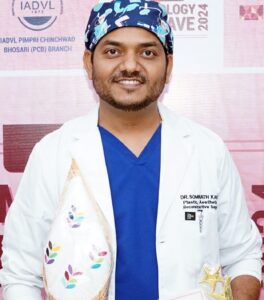-
Orchiectomy
Orchiectomy: Understanding the Procedure and Its Implications
Orchiectomy is a surgical procedure that involves the removal of one or both testicles. This operation can be performed for various medical reasons, including the treatment of testicular cancer, prostate cancer, and as part of gender-affirming surgery for transgender women.
Table of Contents
ToggleUnderstanding what orchiectomy entails, its benefits, risks, and recovery process is essential for anyone considering this procedure.In this article, we will delve into the details of orchiectomy, including frequently asked questions
What is Orchiectomy?
Orchiectomy is a surgical procedure that may involve the removal of one testicle (unilateral orchiectomy) or both testicles (bilateral orchiectomy). The surgery can be performed through different techniques depending on the underlying condition being treated. The primary goal of orchiectomy is to eliminate diseased tissue, reduce hormone levels (particularly testosterone), or address anatomical concerns.
Reasons for Orchiectomy
There are several medical conditions that may necessitate an orchiectomy:
- Testicular Cancer: The most common reason for orchiectomy is the presence of cancer in one or both testicles. Removing the affected testicle(s) helps prevent the spread of cancer.
- Prostate Cancer: In cases where prostate cancer has advanced, orchiectomy may be performed to reduce testosterone levels, which can fuel cancer growth.
- Male Breast Cancer: Orchiectomy may be recommended as part of treatment for male breast cancer.
- Undescended Testicle: If a testicle has not descended into the scrotum by puberty, surgical intervention may be necessary.
- Severe Trauma: Trauma to the testicles that results in significant damage may require removal.
- Testicular Torsion: This condition occurs when the spermatic cord becomes twisted, cutting off blood supply to the testicle. If not treated promptly, it can lead to necrosis (tissue death).
Types of Orchiectomy Procedures
There are several types of orchiectomy procedures:
- Simple Orchiectomy:
- This involves removing one or both testicles through a small incision in the scrotum. It is often performed for conditions such as testicular cancer or as part of gender-affirming surgery.
- Radical Inguinal Orchiectomy:
- This technique involves removing one or both testicles through an incision made in the groin area. It is commonly used when there is a suspicion of cancer to allow for better examination and staging.
- Subcapsular Orchiectomy:
- In this procedure, only the tissue surrounding the testicle is removed while leaving the outer shell intact. This method helps maintain a natural appearance and may be used in specific cases where complete removal isn’t necessary.
The Surgical Procedure
Preoperative Consultation
Before undergoing an orchiectomy, patients will have an initial consultation with a healthcare provider. During this meeting:
- The provider will review your medical history and discuss your reasons for seeking the procedure.
- A physical examination will be conducted to assess your condition.
- The provider will explain what to expect during the surgery and answer any questions you may have.
Anesthesia
Orchiectomy can be performed under local anesthesia with sedation or general anesthesia, depending on individual circumstances and patient preference.
Surgical Steps
- Incision: Depending on the type of orchiectomy being performed, an incision will be made either in the scrotum or in the groin area.
- Removal of Testicle(s): The surgeon will carefully remove one or both testicles along with any necessary surrounding tissue.
- Closure: After removing the testicle(s), the incision will be closed using sutures or surgical clips.
- Recovery Room: Patients are typically monitored in a recovery room before being discharged home.
Duration of Surgery
The entire procedure usually takes about 30 minutes to an hour, depending on whether one or both testicles are being removed and the complexity of the case.
Recovery Process
Recovery from an orchiectomy varies by individual but generally includes:
Initial Healing
Patients can expect some swelling, bruising, and discomfort in the days following surgery. Pain medication will be prescribed to manage any discomfort during this period.
Activity Restrictions
Most patients are advised to avoid strenuous activities for at least two weeks after surgery. Light walking is encouraged to promote circulation but should be done cautiously.
Follow-Up Care
Your healthcare provider will schedule follow-up appointments to monitor your healing progress and remove any non-dissolvable sutures if necessary. It’s essential to adhere to aftercare instructions provided by your healthcare team for optimal recovery.
Full Recovery
While initial swelling may subside within a week or two, complete recovery may take several weeks as final results become apparent. Patients usually begin seeing noticeable improvements shortly after surgery as swelling decreases.
Benefits of Orchiectomy
Orchiectomy offers several advantages:
- Effective Treatment: For individuals with testicular cancer or prostate cancer, orchiectomy can effectively remove cancerous tissue and help prevent further spread.
- Hormonal Control: In cases where hormone reduction is necessary (such as prostate cancer), orchiectomy can significantly lower testosterone levels.
- Improved Quality of Life: Many patients report improved self-esteem and comfort following surgery due to reduced symptoms related to their conditions.
Risks and Considerations
As with any surgical procedure, there are potential risks associated with orchiectomy:
- Infection: There is always a risk of infection at incision sites.
- Scarring: While efforts are made to minimize scarring, some patients may experience visible scars after surgery.
- Erectile Dysfunction: Some individuals may experience changes in sexual function following surgery.
- Infertility: Removal of both testicles results in infertility; patients should discuss sperm banking options if they wish to preserve fertility before surgery.
Frequently Asked Questions (FAQs)
Ideal candidates include individuals diagnosed with testicular cancer, prostate cancer, or those undergoing gender-affirming surgery who wish to reduce testosterone levels. A thorough discussion with a healthcare provider can help determine if surgery is appropriate.
Recovery times vary depending on individual factors and whether one or both testicles were removed. Most patients can return to light activities within a week but should avoid strenuous exercise for at least two weeks.
Most patients achieve their desired results in one session; however, some may require additional adjustments depending on their goals and individual anatomy
During your consultation, your healthcare provider will review your medical history, discuss your goals for surgery, evaluate your anatomy through physical examination or imaging tests, explain potential risks and benefits of surgery, and outline what you can expect before and after surgery.
Many individuals retain sexual function after unilateral orchiectomy (removal of one testicle). However, bilateral orchiectomy (removal of both) may affect libido and erectile function due to hormonal changes.
Depending on your condition, non-surgical options such as medication or hormone therapy may be available. Discuss these alternatives with your healthcare provider.
If you experience symptoms such as fever, increased pain or swelling at the incision site, difficulty urinating, or any other concerning signs following surgery, contact your healthcare provider immediately for evaluation and care.

Dr. Akash, is a well trained Cosmetic Plastic surgeon in Breast surgery techniques. He has worked with top cosmetic surgeons in India and implements the gained knowledge into defining the art of cosmetic surgery to treat his patients and give them a naturally curved and contoured Breasts that they desire.
We, at Sculpt Derma, are committed to provide customized and transparent facial rejuvenation services. For any queries or booking an appointment click the button, we will get back to you soon.

Dr. Somnath stands at the forefront of breast aesthetic surgery as an expert Cosmetic Plastic surgeon. His exceptional training and hands-on experience alongside renowned surgeons across India have refined his precision in cosmetic procedures. Combining artistic vision with surgical excellence, he specializes in creating harmonious, natural-looking breast transformations tailored to each patient’s unique desires.
At Sculpt Derma, transparency and personalization are the cornerstones of our facial rejuvenation services. For appointments or inquiries, click the button below, and our team will promptly assist you.
